
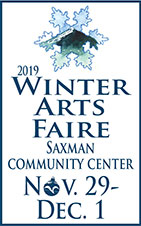




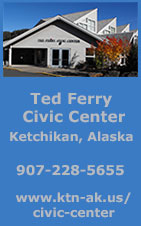










Weekly Specials
Online Shopping; Pickup or Delivery |
|


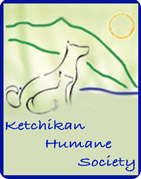

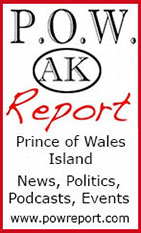

 Contact Contact 
 Webmail
Letters Webmail
Letters
 News Tips News Tips
 Copyright Info Copyright Info
 Archives Archives
Quick News
Search
 Alaska Alaska
 Ketchikan Ketchikan
 SE Alaska SE Alaska
Columns
- Articles
 Dave Kiffer Dave Kiffer
 Money Matters Money Matters
Historical
Ketchikan
 June Allen June Allen
 Dave
Kiffer Dave
Kiffer
 Louise
B. Harrington Louise
B. Harrington
Sports
 Ketchikan Links Ketchikan Links
Public Records
 FAA Accident Reports FAA Accident Reports
 NTSB
Accident Reports NTSB
Accident Reports
 Court Calendar Court Calendar
 Recent Filings & Case Dispositions Recent Filings & Case Dispositions
 Court Records Search Court Records Search
 Sex Offender Reg. Sex Offender Reg.
 Public Notices Public Notices
 Alaska Recall Alerts Alaska Recall Alerts
 Recalls.gov Recalls.gov
 AST Daily Dispatch AST Daily Dispatch
 KTN
Police Reports KTN
Police Reports
 Juneau Police Reports Juneau Police Reports
Weather,
Webcams
 Today's
Forecast Today's
Forecast
 KTN
Weather Data KTN
Weather Data
 AK
Weather Map AK
Weather Map
 AK Weathercams AK Weathercams
 AK Earthquakes AK Earthquakes

|
|

Thursday
November 21, 2019

|
Hiding Out?
The photographer writes this deer appears to have found a colorful place to hide out until the hunting season soon ends.
Front Page Feature Photo by
SUSAN HOYT ©2019
To have your photo featured on the front page, email your photo(s) to editor@sitnews.us
|
|
Southeast Alaska: Commissioner & Governor say USFS roadless grant to AFA used properly after investigation request By MARY KAUFFMAN – The Alaska Department Natural Resources used federal forestry grant funds legally and appropriately to analyze the economic impacts of implementing the federal “roadless rule” in Alaska, Commissioner Corri A. Feige said today.
Democrats on U.S. House and Senate resources committees have accused the State of Alaska of improperly directing U.S. Forest Service (USFS) grant funds to the Alaska Forest Association (AFA), implying the State was misusing federal funds to influence federal policy in the interest of private industry.
The allegations drew on results of a state public records request from the Southeast Alaska Conservation Coalition, a strong opponent of lifting the roadless rule, as reported by Juneau public radio station KTOO-FM.
“The facts show DNR is using these grants exactly as intended – to help the Forest Service understand how roadless rule changes would affect Southeast Alaska,” Feige said. “DNR did everything right, and allegations to the contrary are as easy to refute as they are embarrassing for the accusers. It is unfortunate that Congressional leaders would impugn the State of Alaska and DNR staff before checking the facts.”
The Division of Forestry’s (DOF) many responsibilities include fighting fires throughout Alaska and providing expert information on the impact of federal land management policies on forests in the state. To that end, DOF in 2018 accepted a modification to an annual forest programs grant from USFS, which manages the Tongass National Forest in Southeast Alaska.
USFS drew on funds coded as “state fire assistance” funds” typically disbursed to help build state firefighting capacity, for $2 million in grants that, matched with $2 million in State funds, would support the state’s work as a cooperating agency in the Alaska-specific roadless rulemaking process.
The grant approval language recognized that no more than $1.7 million of the funds would be used to assemble a group representing diverse interests to consider and make recommendations on the roadless rulemaking, and to conduct economic, social and environmental analysis of the group’s recommendations. AFA was contracted to provide economic analysis of commercial timber sales under each alternative, and to train USFS staff on how to produce economic timber sales.
While the accusing legislators claim the Organized Village of Kake had been shut out of the process, Feige said that not only is Kake one of six Southeast Alaska tribes identified as cooperating agencies along with the State in the rulemaking process, but also that the tribe had received travel funds as part of the federal grant. Kake’s president, Joel Jackson, testified to the House Resources Committee on Nov. 13 in opposition to roads in the Tongass, and has met in Juneau with Jim Hubbard, the Department of Interior undersecretary for natural resources and environment, for government-to-government consultations on the issue.
Feige further noted that USFS has held both scoping meetings and public hearings on the draft roadless rule environmental impact study in Anchorage, Washington D.C., Juneau and up to 15 Southeast Alaska communities where public comments were collected.
Grant funds spent to date cover $186,000 for a contractor to facilitate the public interest group meetings, including travel expenses. The State has not yet billed USFS under the grant for work completed by Alaska Forest Association, and could use state matching funds for that purpose. Remaining unspent funds will go to reduce buildup of hazardous fuel statewide, a typical use of such funds.
“DNR and USFS have collaborated effectively throughout the Tongass roadless rulemaking process,” Feige said. “It is appalling that the public and other stakeholders are being intentionally misled about the integrity of that process by politicians and special interests who disagree with Secretary Purdue’s apparent intent to select the “Full Exemption” as the preferred alternative. This type of manipulation simply should not be tolerated.”
Governor Michael J. Dunleavy also set the record straight today regarding the Alaska Department Natural Resources (DNR) decision to utilize grant funds to evaluate the economic impacts of a Roadless Rule exemption for the Tongass National Forest.
Quoting a news release from the Office of the Governor, here are the facts. The Alaska Division of Forestry (DOF), a division of DNR, received $2.0 million from the U.S. Forest Service in 2018. The state utilized the funding in its role as a cooperating agency in the federal rulemaking process. The Alaska Division of Forestry approved a grant of up to $250,000 to the Alaska Forest Association (AFA), a non-profit trade organization representing the Alaska forest products industry, to conduct an economic analysis of the amount of timber produced under each alternative. These alternatives were developed by the Alaska Roadless Rule Citizen Advisory Committee and will be updated following the recent release of the draft alternative EIS.
According to the governor's news release, the analysis by Alaska Forest Association will help inform the state as it prepares comments on the draft EIS and is both important and necessary to determine where harvesting may take place while using the best available industry practices. Lifting the Roadless Rule also creates new recreational opportunities in the Tongass like kayaking and hiking for Alaskans and visitors from around the world and can increase connectivity between communities in the Southeast region.
In July 2019, in what the governor describes as an" extreme environmental organization" based in Southeast Alaska filed a records request with DNR for documents relating to the grant. Following the records request, two members of the United States Congress, Congressman Raul Grijalva (D) of Arizona and Senator Debbie Stabenow (D) of Michigan, requested the USDA investigate the “potential misuse of a recent U.S. Forest Service grant to the State of Alaska.”
“This is another example of extreme environmentalists deliberately cherry picking information to distort and mislead the American public and members of Congress,” said Governor Dunleavy. “The grant was appropriate and legal, all the information anyone needs to reach the same conclusion is readily available to the public. I respectfully suggest Congressman Grijalva and Senator Stabenow do their homework before asking a federal agency to conduct a costly, time consuming and ultimately pointless investigation into a grant that will provide essential information about lifting the Roadless Rule. Exempting the Tongass from the Roadless Rule will create new jobs and economic activity in a region hard hit by the misguided policies of a previous administration.”
“As Alaskans we continually need to remind the Washington D.C. establishment that Alaska is a sovereign state. As Governor, I will continue to use our resources and assets to the benefit of all Alaskans,” said Governor Dunleavy.
U.S. Senator Debbie Stabenow, Ranking Member of the U.S. Senate Committee on Agriculture, Nutrition, & Forestry, and Representative Raúl M. Grijalva (D-AZ-3), Chairman of the House Committee on Natural Resources, on Monday (November 18, 2019) requested a U.S. Department of Agriculture (USDA) Inspector General investigation into whether the U.S. Forest Service improperly granted funds to the State of Alaska. According to the request for investigatio, reportedly, the state used the grant to support their requested exemption from federal environmental rules. Additionally, the state allegedly awarded a portion of the federal funds to the timber industry in order to make the case for removing environmental protections for the Tongass National Forest.
“The Tongass is our largest National Forest and is essential to addressing the climate crisis,” wrote the lawmakers. “It is critical that we ensure this taxpayer funded grant was properly awarded and used.” - More...
Thursday PM - November 21, 2019
|
|
Southeast Alaska: AMHS to Move Forward with Repairs to the M/V LeConte – The Alaska Department of Transportation announced today that after thorough inspections of the 45-year-old M/V LeConte and the 44-year-old M/V Aurora, the Alaska Marine Highway System is moving forward with repairs for the LeConte.
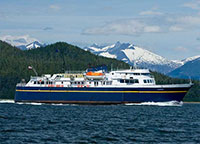
M/V LeConte
Photo courtesy ADOT
|
Engineers inspecting the ships determined that both will require extensive steel replacement. The Aurora will require 20% more steel to be replaced and locations are more challenging because of associated electric, plumbing, and hydraulic lines. Repair work on the Aurora will be more expensive and will take longer.
Estimates for the LeConte repairs are $5.2 million total. Last month, $1.2 million was spent on the ship’s annual overhaul, leaving $4 million in future repairs. The LeConte repair work that remains includes replacement of steel on the ship’s hull. The LeConte’s engines have been rebuilt, and the Aurora will need replacement engines in the future.
Both ships were pulled out of service earlier this month for annual overhauls. It was determined that significantly more repair work was required than originally budgeted and AMHS does not have funds to repair both vessels. Last session, $20 million was appropriated to the Marine Highway Fund, AMHS has legislative authority to spend $13.5 million of this amount. The $13.5 million will be used to pay for annual overhauls for each of the AMHS vessels that are in service.
The M/V Fairweather, M/V Chenega, M/V Aurora, and M/V Malaspina are in long-term layup and will not receive annual overhauls. - More...
Thursday PM - November 21, 2019
Southeast Alaska: New Study calls on state to reform management of Sitka Sound roe fishery – A new study is recommending major changes to the way the State of Alaska manages the sac roe herring fishery in Sitka Sound and is predicting dire outcomes for the ancient subsistence herring roe fishery located there, which supports people across the state and Pacific Northwest, if things do not change.
The study, The Distribution of Subsistence Herring Eggs from Sitka Sound, Alaska, touts the enormous, wide-ranging social and ecological benefits of Pacific herring from Sitka Sound and the unique Alaskan subsistence economy and ecosystem services which depend on their production and distribution.
The study, which was sponsored by Sealaska Heritage Institute (SHI) and led by Investigator Thomas Thornton, Ph.D., found that spawning populations of herring outside of Sitka Sound have been depleted by commercial reduction and sac roe fishing and that the role of Sitka herring as a keystone subsistence resource and foundation forage fish for salmon, sea mammals and other fish and wildlife in the marine food web should be a matter of public policy concern, review and reform.
The study included interviews with more than 50 participants from Sitka, Angoon, Hoonah, Kake, Juneau, Metlakatla and other communities involved in the subsistence harvest and distribution of herring roe. The study was also based on a thorough review of the scientific literature and previous research efforts of the investigator.
It is one of the most extensive studies of its kind on the cultural, historical and societal importance of herring in Sitka Sound, the mecca of herring spawning and egg gathering for thousands of years and the last stronghold in the region of this keystone species.
The importance of the study and its findings cannot be overstated, said SHI President Dr. Rosita Worl, an anthropologist who has studied subsistence cultures and economies throughout Alaska and the circumpolar Arctic.
“We in the Native community have said for many years that our herring runs are in trouble, but our pleas have fallen on deaf ears, even as we’ve witnessed once-strong herring runs disappear,” said Worl, noting that herring populations once abounded across Southeast Alaska.
“If the current management approach continues, we will see the extinction of another cultural tradition, to the detriment of all Alaskans, herring and the species that rely on herring,” said Worl, who authored the foreword for the publication.
The study argues that improved recognition and support for the ecological and cultural benefits of Native herring egg gathering and cultivation techniques, and an alternative approach to the destructive sac-roe extraction fishery, is the best way to optimize benefits to Alaskans and the health of the state’s fisheries.
Among other things, the study recommends that the state, which does not recognize herring as a forage fish, add the species to Alaska’s Forage Fish Management Plan, which might subject the fish to more conservative conservation management.
“Pretending, by omission, that they are not a forage fish is a scientific and legal absurdity. Herring are classified as forage fish by most government agencies, including the United States Geological Survey and the National Oceanic and Atmospheric Administration,” Thornton wrote, citing a paper compiled by the Sitka Tribe of Alaska.
The study also recommends that the state commission a management evaluation to improve the stewardship of Pacific herring. The management evaluation should recognize the historical and cultural ecology that has served to develop and sustain the model of “cultivated abundance,” as opposed to the “maximum sustained yield” model the state uses today. The evaluation should factor in Indigenous herring management, as well as the unparalleled distributional system and ecocultural benefits, Thornton wrote.
The study also recommends that the state change the way herring roe is allocated for subsistence harvests. The current method, known as “amount necessary for subsistence,” grossly underestimates the amount needed for subsistence use.
In addition, the study recommends instituting a robust collaborative research and management regime under a memorandum of agreement that would include the Alaska Board of Fisheries, the Alaska Department of Fish and Game, Sitka Tribe of Alaska and the Federal Subsistence Regional Advisory Council for Southeast Alaska. Under the new structure, the partners would work together on a strategic review and revised guidelines for management of herring ecosystems. - More...
Thursday PM - November 21, 2019
|
|
Alaska: Public Comment Opens on Draft Environmental Impact Statement on NPR-A Integrated Activity Plan By MARY KAUFFMAN – The Bureau of Land Management (BLM) announced today it is seeking public comment on the Draft Environmental Impact Statement (EIS) for a new integrated activity plan (IAP) for the National Petroleum Reserve in Alaska (NPR-A). The Notice of Availability will publish in the Federal Register on Friday, Nov. 22, 2019.
“With advancements in technology and increased knowledge of the area, it was prudent to develop a new plan that provides greater economic development of our resources while still providing protections for important resources and subsistence access,” said BLM Alaska State Director Chad Padgett.
Padgett said, “This is one of several actions we are taking to further expand responsible energy development based on substantial input, and we will continue seeking public input in this phase of the analysis. As part of our commitment to ensure robust public input and Alaska Native stakeholder participation over the holiday season, we are allowing for a 60 day comment period on this draft.”
The BLM initiated the Draft EIS in November 2018 to develop a new management strategy for all BLM-managed public lands in the 23 million-acre NPR-A as directed in Secretary’s Order 3352 (Order), which envisions clean and safe development in the NPR-A while avoiding regulatory burdens that unnecessarily encumber energy production, constrain economic growth and prevent job creation. The Order responded to requests from the State of Alaska and the North Slope Borough to increase opportunities for infrastructure and to help build capacity to support their aligned goals in light of recently increased activity on Alaska’s North Slope. The State and Borough seek to balance economic growth, preservation of a healthy environment, and a vibrant traditional subsistence culture.
In addition to advances in technology, a 2017 USGS survey calculating a significantly higher estimate of technically recoverable oil required developing a new management strategy for the NPR-A. New information from caribou monitoring reports not available in 2012 also informed this new analysis.
The Draft EIS outlines four alternatives providing a range of options for leasing and development. The Final EIS will be informed by public comments received and identify a preferred alternative that can be a combination of different aspects of the range of alternatives.
The BLM is required to include the status quo as an alternative, “Alternative A,” which maintains the 11.8 million acres for development under the 2013 record of decision. The other alternatives include:
- Alternative B, which decreases the land available for leasing and new infrastructure to 11.4 million acres and designates all special areas as unavailable.
- Alternative C, which increases the land available for leasing and new infrastructure to 17.1 million acres and keeps a core area around Teshekpuk Lake as unavailable.
- Alternative D which increases the land available for leasing and new infrastructure to 18.3 million acres allowing for the entire Teshekpuk Lake special area, as well as parts of the Utukok River Uplands special area, to be available for development.
The EIS identifies new management alternatives that consider different land allocation combinations, opening new areas to leasing, new or revised lease stipulations and best management practices and examining current special area boundaries.
U.S. Sens. Lisa Murkowski, Dan Sullivan, and Rep. Don Young, all R-Alaska, today issued statements after the Bureau of Land Management (BLM) announced the draft Environmental Impact Statement for an updated Integrated Activity Plan for the National Petroleum Reserve-Alaska.
“This is a significant step toward a new plan that is more consistent with the legal purposes of the petroleum reserve, which holds the potential for billions of barrels of recoverable oil that can help refill the Trans-Alaska Pipeline,” Murkowski said. “We have recently learned a great deal about the abundant resources of the NPR-A, and updating the deeply flawed 2013 IAP to provide greater access is necessary to reflect our opportunities for responsible development. We will review the draft EIS closely and encourage Alaskans to provide comments and participate in the public process.” - More...
Thursday PM - November 21, 2019 |
MICHAEL REAGAN: Making a Sham of Impeachment - “Laws are like sausages,” Otto von Bismarck supposedly said. “It is better not to see them being made.”
Suffering through far too many hours of the House impeachment this week reminded me of the truth of that political quip.
Making laws is a dirty, smelly, partisan, often corrupt business, even in the best democratic republics.
Making foreign policy is just as messy, as the parade of witnesses from the state department who appeared before Adam Schiff’s intelligence committee proved again and again.
Ambassador Yovanovitch, Ambassador Volker, Col. Vindman, Kent, Taylor, Sondland, Williams, Hill…
Schiff’s carefully chosen cast of “fact witnesses” was called in this week in hopes of proving that President Trump should be impeached for allegedly holding up U.S. military assistance to Ukraine to benefit his personal political interests at home.
The witnesses offered different, often conflicting opinions about what Trump and the U.S. should or should not have done in Ukraine.
They testified for days about what they presumed the president wanted to happen in Ukraine, what they thought he said and what they heard secondhand or thirdhand that he had apparently said.
Of all the witnesses who testified, the only one who did the right thing in the confusion of Ukraine was Gordon Sondland, the U.S. Ambassador to the European Union.
When he kept hearing different versions of what Trump wanted to see the Ukrainian government do or say about corruption before the hold on U.S. military aid was lifted, he dialed up the White House and asked the president directly what the heck he wanted.
That’s when Trump blurted his famous line, “I want nothing. I want nothing. I want no quid pro quo.”
Schiff’s witnesses were supposed to make the case that President Trump was guilty of offering the president of Ukraine a quid pro quo – or guilty of bribery, or abuse of power, or obstructing Congress, or too many tweets, or any impeachable “crime” that works.
The quid-pro-quo charge was the most idiotic. - More...
Thursday PM - November 21, 2019 |

Political Cartoon: Impeachment Hearings
By Christopher Weyant ©2019, The Boston Globe, MA
Distributed to paid subscribers for publication by Cagle Cartoons, Inc. |
Open Letter To DEC Commissioner Jason Brune By Terri Robbins - I was appalled to learn of your recent statement at the AFN conference. To say that climate change is not an emergency in Alaska is incorrect, at best, and malfeasance of the most egregious kind, at worst.
We just experienced the hottest summer on record. Sea levels have risen, forcing coastal villages to relocate. Habitat for polar bears and other arctic mammals is disappearing at an alarming rate. The interior experienced devastating wildfires, as did south central and the Kenai Peninsula. The water levels in key salmon streams was dangerously low. Southern southeast communities were forced to rely on diesel power to supply electricity due to low levels of water in lakes supplying hydropower. An extreme drought was declared. In our oceans, whales were dying in large numbers due to starvation, arguably caused by warmer ocean temperatures which killed off plankton and krill. - More...
Wednesday PM - November 20, 2019
 |
State Legislature Year in Review By Rep. Dan Ortiz - As the House Representative for District 36, I’m writing to update you on some of the issues currently before the Alaska State Legislature. The 2019 legislative sessions were challenging – we continued to grapple with creating the budget, implementing a long term sustainable fiscal plan, and address declining revenue.
While we were able to hold fast on funding for departments like Fish & Game and Education, the Marine Highway System faced unprecedented cuts. During the interim, I have been focused on re-establishing the AMHS link to Prince Rupert. I will continue to push this issue until we see a long-term commitment by the Alaska Department of Transportation to keep Southeast connected.
New sources of revenue were not addressed, and funding for the budget continues to come predominately from our oil resources and a portion of the Permanent Fund Earnings. I am an advocate for policies that will promote as large of a dividend as possible while maintaining funding for essential government services and allowing for growth in the overall value of the Permanent Fund itself. - More...
Tuesday PM - November 19, 2019
 |
Save Our Seas 2.0 tackles global marine debris crisis By Sen. Dan Sullivan, Sen. Sheldon Whitehouse, Sen. Bob Menendez - We may have plenty of political differences, but we come from coastal states. That means we have a front-row seat to the peril of plastic waste and marine debris flowing into our oceans at the rate of around 8 million metric tons per year. We understand what it will mean for our fishing and tourism industries when the weight of plastic in our oceans equals the weight of fish in the sea — something projected to happen by mid-century. We don’t have a moment to lose in confronting this problem.
That’s why we built a coalition in Congress and gathered input from environmental and industry stakeholders alike. Despite a divided Washington, that work resulted in a bill that won broad, bipartisan support. When the Save Our Seas Act became law last October, it was a moment of bipartisan progress on a vital issue — one to be celebrated.
Before the president’s ink on Save Our Seas was dry, our bipartisan trio of senators began developing the Save Our Seas 2.0 Act. We sought to harness the momentum behind the first bill to up the ante on combatting the global marine debris crisis. Marine debris requires multifaceted, multisector solutions with a global reach, and the United States ought to be driving these solutions.
In developing the Save Our Seas 2.0 Act, we collected hundreds of comments and ideas from researchers, federal agencies, nongovernmental organizations and industry. We reviewed the latest science on marine debris and plastics pollution. We identified areas ripe for legislative action and others where investments in research are needed. We looked inward at the United States’ own waste management systems and how we could better position the country as an international leader — not hindrance. - More...
Tuesday PM - November 19, 2019
 |
Impeachable Offenses By Donald Moskowitz - Article Two of the U.S. Constitution states "The President, Vice President, and all civil officers of the United States, shall be removed from Office on Impeachment for, and Conviction of, Treason, Bribery, or other high Crimes and Misdemeanors."
The current impeachment inquiry by the U.S. House of Representatives against President Trump is focusing on the allegation he tried to bribe and/or extort President Zelensky of Ukraine to investigate the Bidens in the runup to the 2020 election in exchange for $400 million in foreign aid to Ukraine. The investigation of the Bidens did not occur and the $400 million in aid was subsequently given to Ukraine.Therefore no bribery or extortion occurred.
But did President Trump's actions meet the test of "high Crimes and Misdemeanors"?
A recent president to be impeached was Bill Clinton.. He was impeached for perjury and obstruction of justice relative to the Monice Lewinsky affair. Richard Nixon was charged, but not impeached as an outgrowth of the Watergate coverup. He was charged with obstruction of justice, abuse of power and defying subpoenas during the impeachment investigation. The House Judiciary Committee stated that "high Crimes and Misdemeanors" goes beyond crimes to include "behaving in a manner grossly incompatible with the proper function of the office and employing the power of the office for an improper purpose or personal gain."
Going back to the Constitutional Convention of 1787 the founding fathers decided the phrase "high Crimes and Misdemeanors" provided "flexibility and guidance" in deciding on impeachable offenses, which references 400 years of practice in Great Britain. - More...
Tuesday PM - November 19, 2019
Email letters, opinions, OPEDs to editor@sitnews.us
|
Articles &
photographs that appear in SitNews may be protected by copyright
and may not be reprinted or redistributed without written permission
from and payment of required fees to the proper sources.
E-mail your news &
photos to editor@sitnews.us
Photographers choosing to submit photographs for publication to SitNews are in doing so, granting their permission for publication and for archiving. SitNews does not sell photographs. All requests for purchasing a photograph will be emailed to the photographer.
|
|















The Local Paper is
available online.
Click here for this week's printed edition (PDF)
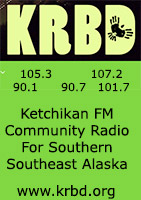

|
|


![]() Contact
Contact ![]()
![]() Webmail
Letters
Webmail
Letters![]()
![]() News Tips
News Tips![]()
![]() Copyright Info
Copyright Info![]() Archives
Archives![]() Alaska
Alaska![]() Ketchikan
Ketchikan![]() SE Alaska
SE Alaska![]() Dave Kiffer
Dave Kiffer![]() Money Matters
Money Matters ![]() June Allen
June Allen![]() Dave
Kiffer
Dave
Kiffer![]() Louise
B. Harrington
Louise
B. Harrington ![]() Ketchikan Links
Ketchikan Links![]() FAA Accident Reports
FAA Accident Reports ![]() NTSB
Accident Reports
NTSB
Accident Reports![]() Court Calendar
Court Calendar![]() Recent Filings & Case Dispositions
Recent Filings & Case Dispositions ![]() Court Records Search
Court Records Search![]() Sex Offender Reg.
Sex Offender Reg.![]() Public Notices
Public Notices![]() Alaska Recall Alerts
Alaska Recall Alerts![]() Recalls.gov
Recalls.gov![]() AST Daily Dispatch
AST Daily Dispatch![]() KTN
Police Reports
KTN
Police Reports![]() Juneau Police Reports
Juneau Police Reports ![]() Today's
Forecast
Today's
Forecast![]() KTN
Weather Data
KTN
Weather Data![]() AK
Weather Map
AK
Weather Map![]() AK Weathercams
AK Weathercams![]() AK Earthquakes
AK Earthquakes










































